In the 21st century, the relevance of practical on-board training is perhaps more important than ever. With the right mix of different approaches, officer candidates should be inspired for their future work.
"If you want to build a ship, don't start by collecting wood, cutting planks and organising the work. Instead, awaken in people a longing for the vast, endless sea." - Antoine de Saint-Exupéry
Operating in the information space, cyberwarfare, the use of armed drones, digital natives, distance leadership - buzzwords that characterise our current military thinking and the people in the military. Marine influence and dominate perceptions to a large extent. Is this really the case when we talk about training young people to become Naval officers talk? How is it possible to train, educate and mould in digital times? How do you transform a person who previously had no connection to the sea into a maritime-minded person? Naval officer? How do we teach nautical and maritime skills? How do you colour a heart navy blue? Or to put it simply: How do we get young people excited about something that they are largely unfamiliar with? How do we awaken "the longing for the vast, endless sea"?
"The thinking of every naval officer must be characterised by the sea," demanded former Vice Admiral Friedrich Ruge - today this is one of the leadership principles of the Commandant of the Mürwik Naval School. From the point of view of the Mürwik Naval School (MSM), the answer to this is in part practical training on board, on the water. The aim is to prepare young people who are interested in the profession of naval officer and to instil enthusiasm for seafaring, to give their thoughts and actions a maritime foundation, even if they later do their service on land or outside the seas. Marine provided. This requirement is offset by the fact that the German fleet is historically the smallest in the world and therefore has fewer opportunities for on-board practical training and training voyages. As a consequence, this means that the need for practical on-board training on grey units in the fleet cannot be adequately met. This in turn has a direct impact on the goal of moulding, identifying with the job profile and, ultimately, the willingness of young people to join the fleet. Officersto go to sea. The operational minimum of practical shipboard training is not being met. At the Mürwik Naval Academy, the goal of increasing the proportion of practical training on board is therefore still being pursued, approaches are being further developed and viable concepts are being sought.
Until 1990, officer candidates were given their first insights into the profession of an officer on board the training ship Deutschland. naval officer was given. After its decommissioning, this task was taken over in annually changing training squadrons and with embarkation in training projects of the destroyer flotilla. Until 2015, the deployment and training unit then played the central role in practical on-board training. With its discontinuation, the last reliably plannable component that allowed the entire officer crew to complete a shipboard internship of the same intensity disappeared. This was compounded almost simultaneously by the cancellation of the Gorch Fock due to the repair project, which is expected to continue until late summer 2021. A fleet internship after graduation in preparation for post-university training only takes place in the rarest of cases due to the tight schedule of the courses. In addition, the demanding degree programme leaves little opportunity to use study-free time for internships in the fleet. By the end of the officer training course, an officer candidate in Crew VII/1987 had completed around 20 weeks of practical shipboard training, mainly at sea on the training ships Gorch Fock and Deutschland, while an officer candidate in Crew VII/2019 spent an average of four to six weeks, much of which had to take place in harbour service and on shipyard vessels. This should in no way be seen as a criticism of the fleet. Rather, it represents the tension between the workload and size of the fleet and the embarkation requirements of the MSM, which trains a crew with a planned strength of up to over 300 officer candidates every year.
The active network developed at the Mürwik Naval Academy is an attempt to utilise the available resources, training and internship opportunities effectively and to dovetail them closely with one another. This network does not reinvent things, but rather draws on tried and tested methods and develops topics further. At the same time, it focusses on the parts available through the MSM assured accesssuch as the Gorch Fock, service sailboats and the bridge simulator at the Mürwik Naval Academy. In addition to this, the active alliance also describes training opportunities that still need to be realised or represents the ideal situation to be strived for from the perspective of the MSM. The active alliance for shipboard training is based on four pillars: Gorch Fock, military sailing, shipboard and sea cadet internships as well as the nautical ship handling training centre (AANS) and training boats.
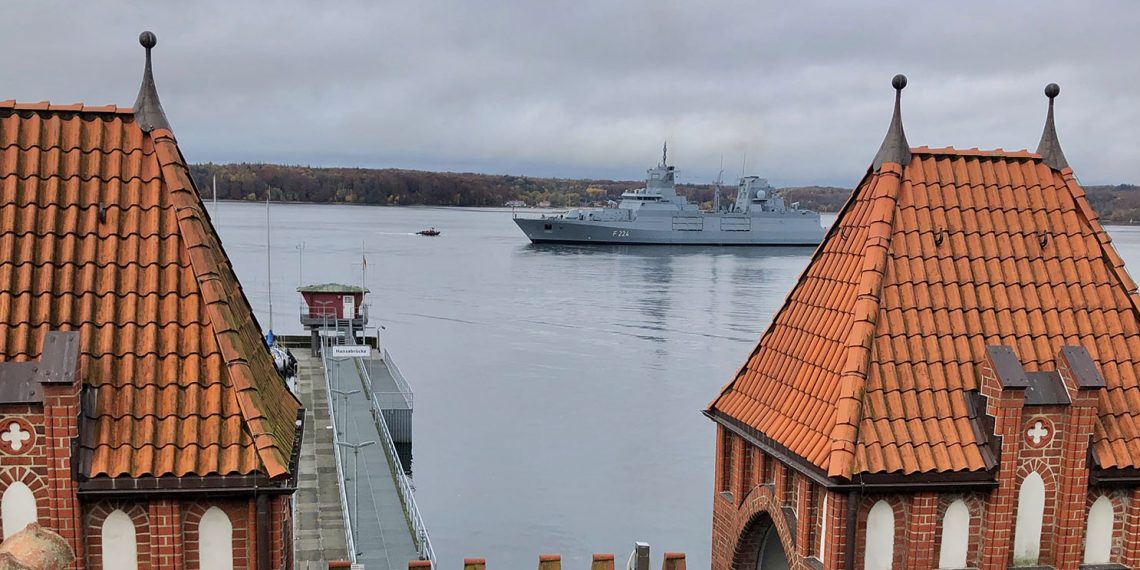
Gorch Fock
The Gorch Fock is and remains the central building block of practical shipboard training with regard to moulding the next generation of officers. On no other unit of the German Marine There is no other place where the understanding and experience of the sea dimension and the necessity of working in a team can be conveyed more vividly and intensively than here. The availability of the Gorch Fock and its voyage planning sets the pace for the pre-university training of the officer candidates. All other training phases at the MSM are synchronised with this. The preparation of the officer candidates for the Gorch Fock takes up a large part of the first months of training. The focus here is on increasing physical fitness with a clear objective: obtaining the ability to work in the rigging in accordance with the specifications of the Pommerin Commission - to increase safety on board. When the Gorch Fock returns in late summer 2021, it will be possible for the first time since the end of 2015 to realise this component of the effective shipboard training network by embarking all officer candidates of a crew on three voyages for seven weeks each. However, the Gorch Fock will be more than just a sail training ship after her return: she will become the training ship of the Mürwik Naval Academy. The aim is to increasingly transfer training content from the classroom to the sailing classroom in order to impart knowledge in a skills-orientated manner. One example of this is a supplementary navigation module required for participation in the Officer of the Watch course, which will no longer take place on the MSM, but on the Gorch Fock.
Military sailing
In recent decades, there has also been a reduction in the number of grey units available at the Mürwik Naval Academy's boat harbour, in line with the number of grey units available in the Marine to be recognised. This trend was reversed and the MSM fleet was modernised in 2020. On the initiative of Ingo Gädechens, Member of the German Bundestag, seven new Sunbeam 36.2 cruising yachts were delivered within a very short space of time. As of today, 13 yachts with lengths of ten and eleven metres (Hanseat and Sunbeam), eight Nadine and the two large boats Asta and Taifun are available for military sailing training. Military sailing training means much more than just sailing training. The focus is on the term "military". Obtaining a sailing licence from the Marine is a positive side effect. The much more important aspect is familiarising yourself with standards and procedures as they are applied in the fleet at sea. The focus here is on briefings, routines, ceremonies and terminology through to seamanship manoeuvres and the execution of orders as a single boat or in a convoy. These are formative contents for later service on board, which the prospective Officer convey an understanding of how the fleet basically works. On the other hand, the Officer This makes it easier to get on board for the first time at sea, as there is a direct recognition effect. Sailing at the Mürwik Naval Academy is like sailing on a grey ship, only small and with sails.
In terms of content, a bridge is being built to the area of training in the field of leadership theory, which up to now has mainly taken place on land and in camouflage. Sailing with a mission is the goal of military sailing training. "Move your division to Geltinger Bay by time X and anchor the unit there in formation!" could be a possible order that the officer candidates then have to carry out independently. In this way, the mental examination of the topics of space-time forces from the leadership process is conveyed practically at sea. Leadership strength becomes recognisable. Tiredness and rough seas are physically and mentally demanding. Unfortunately, the coronavirus pandemic is still restricting military sailing training, meaning that only day sailing on the inner fjord is currently possible. Nonetheless, the concept of military sailing is a focal point of future training to become a leader of men, a Naval officer.
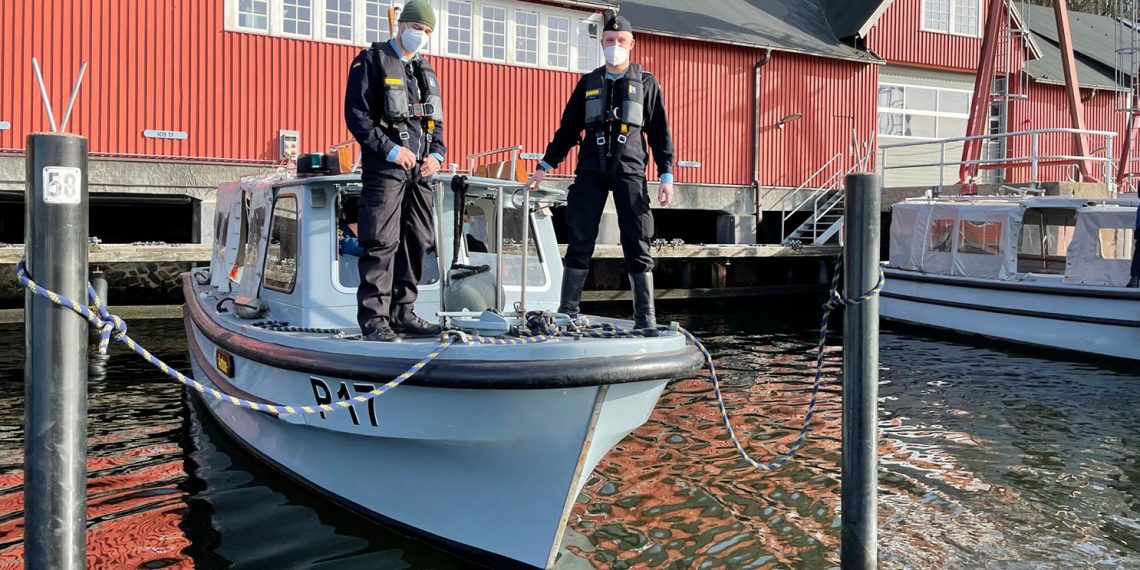
Shipboard internship and sea cadet internship
All endeavours at the MSM can only represent facets of the fleet. Genuine familiarisation and understanding can therefore only take place during internships on ships and boats of the operational flotillas, but of course also in the naval aviation command or naval battalion. This is why internships will continue to be the most valuable and efficient tool in the process of moulding and inspiring. Only in the internship can the officer candidates experience real life in the troops. In close cooperation with the units, onboard internships will be realised in the lecture hall setting as part of the officer training course in military service. The aim is to organise embarkations of at least two weeks. The first shipboard internship is intended to provide a general insight into life on board. This is where the officer candidate quickly realises whether he or she wants to be assigned to a seagoing unit or is more interested in a shore-based assignment. It is important that every officer candidate is given the opportunity to assess this for themselves. Otherwise, the young soldiers may end up spending a long time just doing the Marine on land and cannot even imagine working at sea. The value of this first shipboard internship is so highly valued at the MSM that even short-term internship offers from the fleet are responded to by rescheduling the officer training course for the corresponding lecture theatre in order to make this possible.
The sea cadet internship is the final stage of training before the four to five-year academic programme. It takes place between the end of the officer training course at the end of June and the start of the degree programme at the beginning of October. This internship is based on the individual wishes of each officer candidate and, with a few exceptions, is completed in the fleet, with the naval aviators and in the naval battalion. The realisation is a task that can only be accomplished by the Marine can be managed together. During this internship, the officer candidates form their first bonds with the individual associations, which will have a lasting influence on their deployment preferences after graduation.
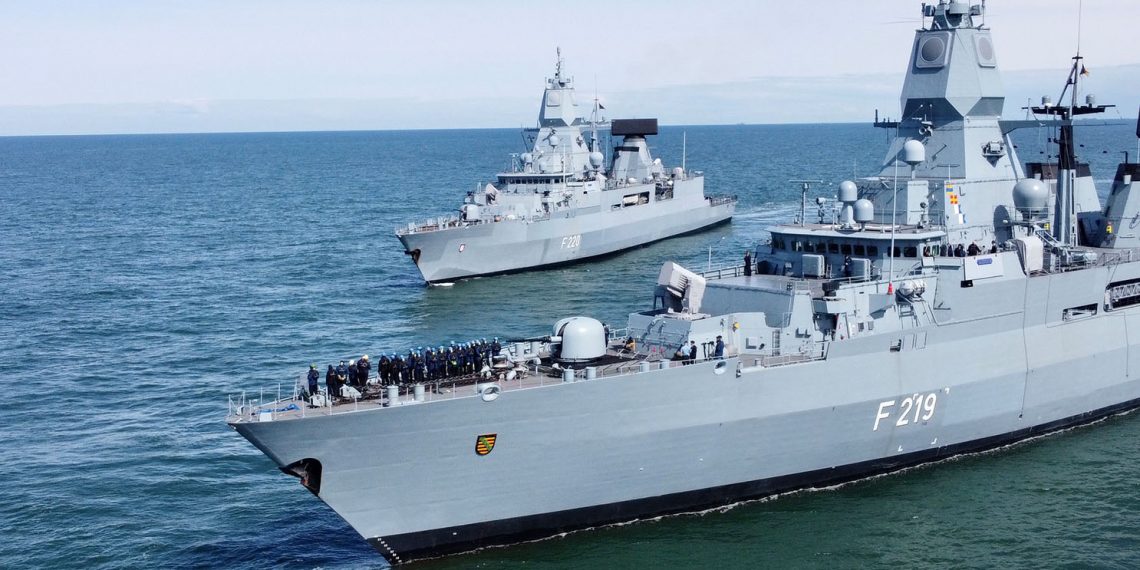
AANS and training boats
The Marienschule Mürwik has one of the most modern bridge simulators in the world in the form of the Nautical Navigation Training Centre (AANS). Training at the AANS is essentially aimed at the Officer after his studies in preparation for his assignment as a bridge watch officer on board. Today's AANS enables the simulation and training of simple to complex nautical and maritime situations. At the same time, the AANS also offers young officer candidates the opportunity to gain an impression of the work of an officer on the bridge of a warship even before they graduate. The AANS is therefore not only important for the specific training of officers of the watch, but can also be a piece of the puzzle in the characterisation at the beginning of training. It is an indispensable building block for practical shipboard training.
The training in the AANS is supplemented by the Nautex in practice. The prospective bridge watch officers put what they have learnt in the simulation into practice during a one-week embarkation on units of the fleet that have been set aside for this purpose - a procedure that has been established for decades. The Naval Academy sees this as a great opportunity for further development in the area of training boats. Units that the naval school can access directly in order to shift more practice to sea and expand the scope of training, particularly in the area of seamanship. Opportunities arise here in the utilisation of the 3rd Minesweeper Squadron's troop platforms. From the point of view of the MSM, this could also be achieved by having its own larger motorboats in the 20 to 25 metre class, comparable to those of the Britannia Royal Naval College. The permanent access to such boats and the ease of handling would open up far-reaching possibilities in practical shipboard training at the MSM. In addition to the four pillars of the shipboard training network described above, the MSM uses all the platforms available in the harbour and attempts to use them in a much more networked way in all areas of training.
The most original form of seafaring is cutter-pulling - with ten mates together in a cutter out on the Flensburg Fjord. The focus here is on physical fitness and working as a team. In addition, the first basic concepts of seafaring can be taught here, as a glance at the calluses on the hands at the end of the day confirms. As was the case a hundred years ago, cutter rolling is an integral part of the training programme. Powerboat training involves mastering a boat under engine power, understanding simple nautical manoeuvres and the deployment of personnel at the manoeuvring stations - here in a small team of four to five people. At the end of the powerboat training, the aim is to obtain the powerboat licence of the Marine. The first nautical licence in the life of the naval officer.
Out of the classroom, out onto the Flensburg Fjord: The launches of the Mürwik Naval School offer this opportunity as small floating classrooms. The dry PowerPoint presentation is transformed into an experience-orientated course when the theory can be experienced directly on the fjord. Topics such as maritime road regulations, collision prevention rules, navigation and radiotelephony are put to the test here. Something that seems abstract and theoretical in the lecture theatre is brought to life and directly understood, such as a deck bearing, fairway buoys or evasion rules.
So what do we conclude? The young people who come to us want to be inspired and challenged. Digitalisation and modern media are part of their daily lives and are perceived by them as natural and normal. They have images of service in the armed forces in their heads, which are largely characterised by camouflage and land missions. At the same time, they crave seafaring experiences and want to Marine experience. This is where practical on-board training comes in. Sailing, embarkation, practical training and military sailing provide the impressions and emotions needed to inspire enthusiasm. Theory in the lecture theatre and dry teaching do not achieve this. The value of practical shipboard training in the 21st century is therefore higher than ever. Once the officer candidate is at university and has not been inspired for seafaring, the path to a shore assignment is short and easy. Then we do not awaken "the longing for the wide, endless sea"!
Frigate Captain Torben Steinweller is a training group commander at the Mürwik Naval Academy.

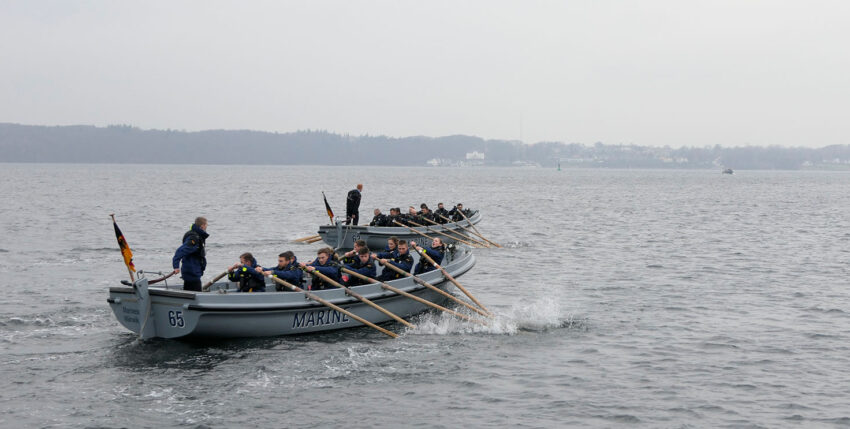






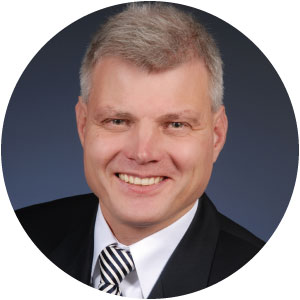
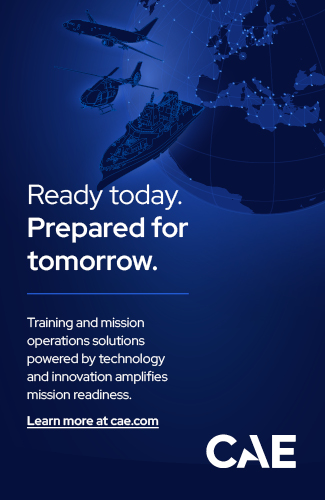

2 responses
Good article with important insights, but is it a training mission to arouse enthusiasm for the sea? Isn't this enthusiasm the reason why young people want to become naval officers?
A very commendable approach, which will be further promoted by the school frigate in the future. All in all, it is a very good endeavour to look at what I want and what I need for it. It is also good that politicians are increasingly recognising that military capabilities must not simply be switched on and off according to budget, but must be developed and maintained.